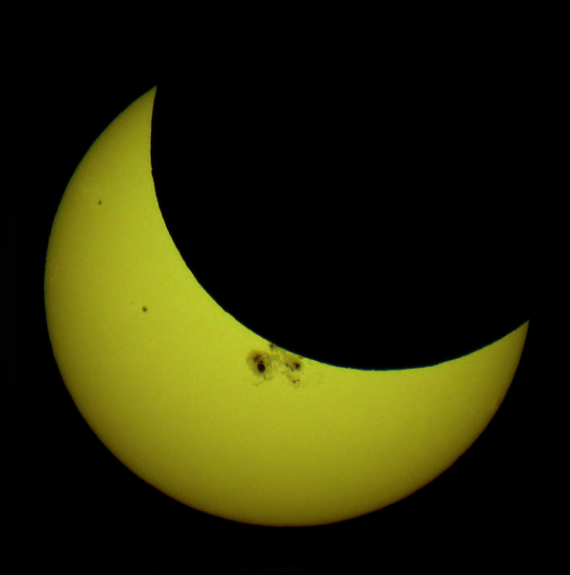After peaking in 2014, experts at NASA predict that solar activity will drop off in 2015. Moreover, on March 20th of this year, a large part of the Old World will have the opportunity to enjoy a beautiful display of darkness: a solar eclipse that will only be total for the inhabitants of the northern Faroe islands and Svalbard, but which will sweep across Europe, north Africa and the northwest quadrant of Asia. It will be one of the light-related news stories to take place in the most appropriate year, the International Year of Light and Light-based Technologies (IYL2015), declared by the United Nations (UN).

Why dedicate a year to light? John Dudley, President of the International Committee of the IYL2015 and the European Physical Society, explains it this way to OpenMind: “The aim of the IYL is to create awareness among the public and the authorities that the science and the technology of light sustain their lives in many ways that are not readily apparent and provide real solutions to many global challenges.” Dudley is also the creator of the idea of the IYL2015, first proposed in 2009 and which sought support from scientific bodies for several years until, in 2013, UNESCO got the full backing of the UN General Assembly. Dudley clarifies that the support of the UN is not a mere formality. “Nothing is further from the truth,” says the New Zealand physicist who lives in France. “Getting high-level political support required the hard work of many people and the development of arguments defending the proposal at all levels: from science to society, the economy, development and more.”

The choice of the year 2015 is not by accident. This year coincides with various anniversaries related with the science of light, starting with a millennial, that of the Arab mathematician and astronomer Ibn Al-Haytham o Alhazen (965-1040), a pioneer of optics and the scientific method, whose work will be commemorated in the global campaign 1001 Inventions and the World of Ibn Al-Haytham. As well, it is the bicentenary of the work of French scientist Augustin-Jean Fresnel (1788-1827), one of the proponents of the wave nature of light, and the sesquicentennial of the electromagnetic theory of light of Scottish mathematical physicist James Clerk Maxwell (1831-1879), the centenary of the works on light of Albert Einstein (1879-1955), and two fiftieth anniversaries: the discovery of the cosmic background microwave radiation by Arno Penzias and Robert Wilson, and the development and application of fibre optics by the Chinese-British-American Charles Kuen Kao.
The IYL2015 will be kicked-off with a scientifically themed Opening Ceremony to be held on January 19th and 20th at the headquarters of UNESCO in Paris. This event will highlight those technologies that, in the words of Dudley, “push the limits of optical science: a new generation of high-powered ultrafast lasers (extreme light), sources of synchrotron light in areas such as pharmacology, the development of quantum technology in areas such as information science, or the application of optical techniques in biology (biophotonics) intended to advance brain imaging.” “These are areas that have been the subject of extensive research, but where I think we’ll probably see breakthroughs soon”, says the physicist.
But as much as science occupies an essential place in the IYL2015, the objective goes beyond popularizing a field of research with a view to augmenting its resources. “Certainly we emphasize that government investment in research and technology is vital in ensuring that today’s science becomes tomorrow’s technology, but there are also many existing technologies that with very little additional investment could be transferred to areas such as health, communications and lighting, so that they can transform the lives of people in developing countries,” explains Dudley. As an example, the scientist cites the Study after Sunset project, whose purpose is to promote the use of solar-powered LED lanterns in households without access to electricity.
Dudley has a special interest in the IYL2015 not remaining at a purely institutional level, but also that it interests ordinary citizens, users of new optical technologies in LEDs or smartphones, which already play an essential role in their lives. The public face of the IYL2015 will include events to be held throughout the world, both through already-existing festivals of light as well as new independent events. “We are also planning citizen-science experiments at the regional and international levels, using smartphones to measure light and air pollution,” says Dudley. “We want to involve as many people as we can.”
Comments on this publication